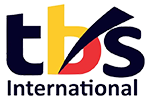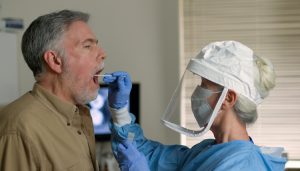International Airport Review spoke with EASA about the importance of having a consistent approach to COVID-19 health safety, and to learn more about its new aviation guidelines that were developed with ECDC.

On 20 May 2020, the European Union Aviation Safety Agency (EASA) and the European Centre for Disease Prevention and Control (ECDC) issued joint guidelines that defined measures to assure the health safety of air travellers and aviation personnel once air travel resumes following the severe disruption caused by the COVID-19 pandemic.
Can you provide a brief overview of the guidelines and how EASA worked with ECDC to develop them?
The guidelines are aligned with the passenger journey and outline the steps that should be taken at each stage to minimise the risk of COVID-19 infection”
EASA and ECDC were requested to work together by the European Commission (EC) to create these guidelines, combining our expertise in aviation with ECDC’s scientific knowledge to make the best possible recommendations for health safety in air travel.
The guidelines are aligned with the passenger journey and outline the steps that should be taken at each stage to minimise the risk of COVID-19 infection.
Passengers will be asked to fill out a health statement, as well as asked not to come to the airport if they are symptomatic or have come into recent contact with an infected person. Additionally, they should bring medical face masks to the airport and wear these throughout their journey.
Airports should be set up in such a way that physical distancing is applied wherever possible. On board, passengers should be spread out across the aircraft if the occupancy level allows. On flights where distancing is not possible, the wearing of a medical mask and air filters should offer protection for passengers against the virus.
Finally, measures should be put in place to minimise the possible transfer of the virus through surface contact – for example, through on-board material, such as magazines, or during service and duty-free sales.
How were the guidelines adapted in order to be able to accommodate airports, airlines and aircraft individually?
Our aim was to create as harmonised an experience as possible”
While the guidelines are not mandatory, the aviation industry shares a common goal in wanting to make flying attractive to passengers once again. That can only be achieved if passengers are confident that flying is safe for their health.
The guidelines offer a blueprint to make air travel as safe as possible, so, we indeed expect that there will be a high level of adoption. Our aim was to create as harmonised an experience as possible, while still bearing in mind that airports and aircraft differ from each other, so a one-size-fits-all solution is not feasible.
Why is it important to develop a consistent continent-wide approach to COVID-19 health safety measures in airports?
Our guidance puts a lot of focus on passengers taking responsibility”
We are all in this together – aviation stakeholders, airport operators, regulators and passengers – and we should all do everything in our power to get out of this crisis with the lowest negative impact possible, especially in terms of human lives.
Consequently, our guidance also puts a lot of focus on passengers taking responsibility, informing themselves and adhering to the measures in place to ensure a safe and comfortable journey for them, as well as for their fellow travellers.
How will the guidelines help to restart the European aviation industry?
The entire aviation industry has an interest in restoring passenger confidence”
As mentioned above, the guidelines are not mandatory. However, the entire aviation industry has an interest in restoring passenger confidence so that operations can recover from this unprecedented crisis. The guidelines aim to create a safe air travel experience for the whole of Europe, as well as for flights to and from Europe.
EASA considers air travel to be ‘safe’, providing all parties abide by the guidelines. The guidelines define all possible and practical measures to make air travel as safe as possible, despite the problems of COVID-19. Although we cannot guarantee 100 per cent prevention against infection, the guidelines put everything in place to minimise the risk.
What does EASA hope to achieve through the COVID-19 measures monitoring programme?
We have launched the monitoring programme to work with airports and airlines who have agreed to implement the guidelines and give us feedback on how they work in practice. This will help us to understand what problems are encountered in real-life situations.
ECDC is also constantly gathering new scientific information about the spread of the disease, which could result in changes – of whatever type – to the guidelines as we collectively understand more about this disease.



